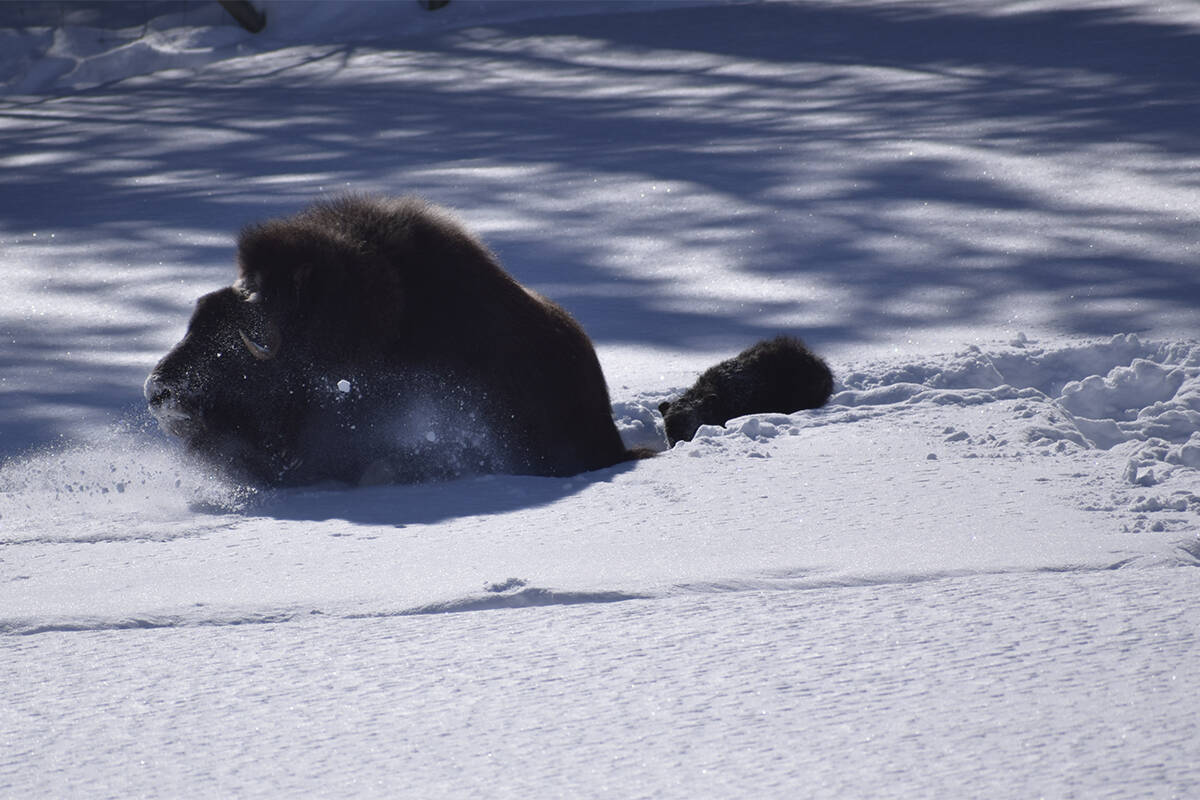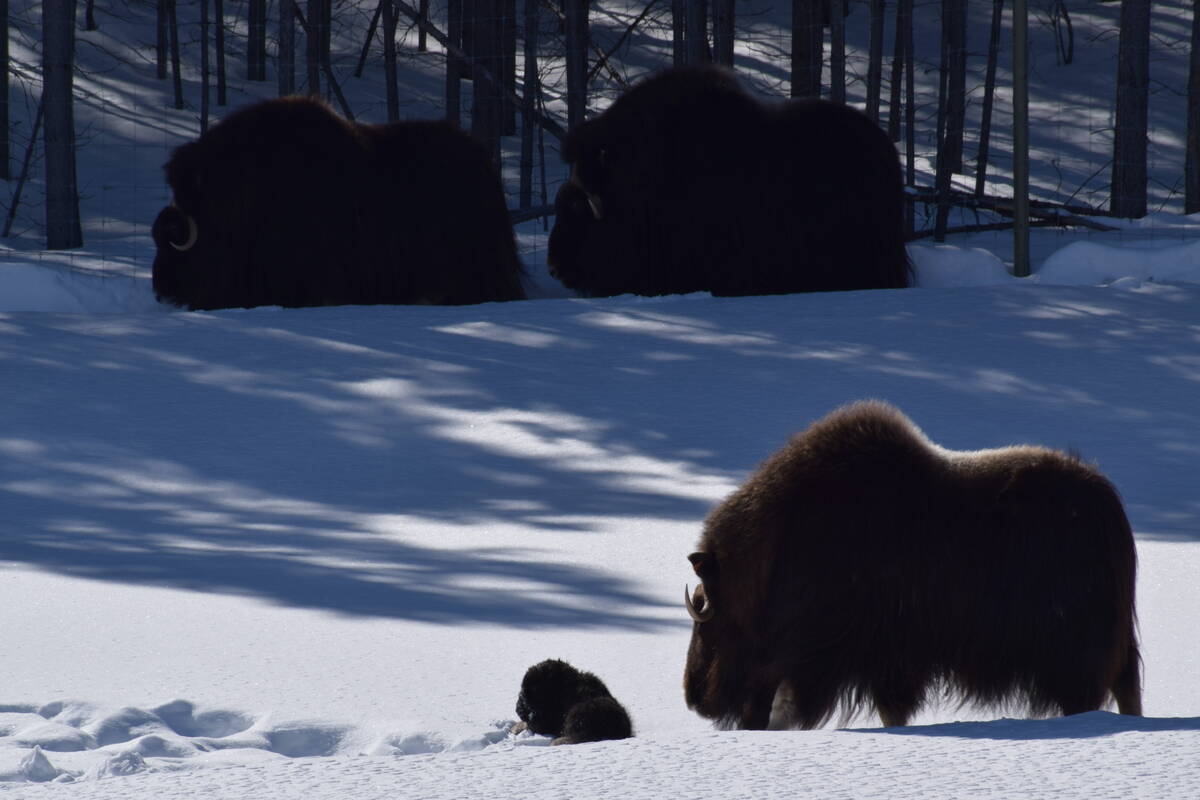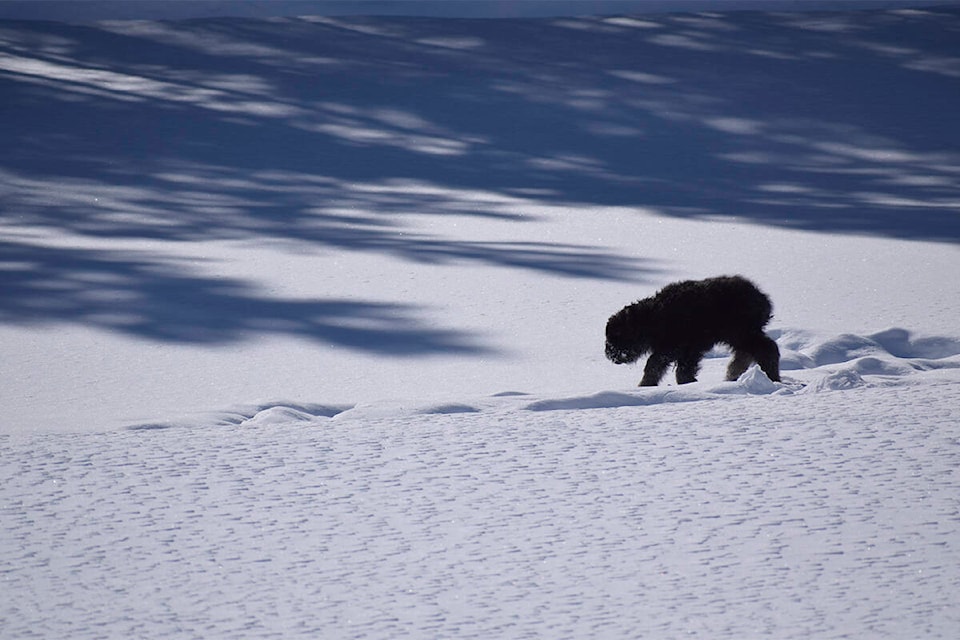The first baby animal born this spring at the Yukon Wildlife Preserve has died — but several more babies could be on the way.
The male muskox was born at the non-profit facility on April 8. He was found dead on April 12.
Dr. Maria Hallock, who is a veterinarian at the wildlife centre, described the young muskox as “small and somewhat weak.” Hallock noted he was struggling to survive the “worst weather during his first few days of life.”
In an email on April 12, Hallock said the preserve woke up to a snowstorm on April 9, with wind and low visibility adding approximately six inches of wet, heavy snow to the deep layer that already existed there, followed by a cold snap.
“None of these conditions are favourable for the survival of the newborn calf. He made it, however, and is staying close to his mom, who has not left his side and chases away any critters that attempt to approach the calf,” Hallock said.
“The strong bond between the two is very obvious.”
At just a couple of days old, the little male calf could be heard crying and seen trying to wade through snow in his enclosure on April 10, before a bigger muskox started plowing a path in front of him.

Caring for babies
Animal care staff had been monitoring the calf from a distance by using a set of binoculars and a scope that is set up at the main office.
“While the calf was less active than expected and nursing less than expected, it was moving throughout the habitat with its mother,” the preserve said in a statement on April 14.
The animal care team observes new mothers and calves closely to assess their health. The team had a chance to do a physical exam and provide nutritional support to the calf on April 11.
“They did not find any issues during the physical exam. Often some additional food, electrolytes and vitamins are enough when a baby animal is showing signs of weakness. The calf was immediately returned to its mother following this intervention, which accepted the calf back without issue,” reads the statement.
“The mother and calf stayed close together, even after the calf was found to have passed away.”
Hallock conducted a necropsy on April 13. The post-mortem analysis was “quite clear” and indicated an intestinal blockage present in the small intestine.
“In this case, evidence suggests that the issue was congenital,” the statement reads. “Getting an accurate diagnosis and a successful surgical treatment, and subsequent successful recovery in a wildlife species of this age would be extremely difficult.”
An information post outside the muskox pen at the centre says young are usually born between April and June.
“With muskox, having snow on the ground is actually really great,” said Jake Paleczny, executive director at the preserve.
“It makes for a much kind of cleaner, healthier environment for baby muskox especially. These are the kinds of conditions you’d expect to see muskox in the wild being born in.”
Paleczny said on April 11 that the centre takes a “hands-off” approach when it comes to tending to animals at a young age.
“It would only be under pretty exceptional circumstances that we would get in there and get hands-on at this point,” he said, adding that getting routine check ups, shots and an ear tag for identification purposes would have come at a later time.
The sign says a calf will frequently huddle near its mother, and the animals have a sense of social order and unity.
“If you want to start getting right in there, that’s extremely stressful for the mother, who’s with the baby, and then that adds stress to the baby,” Paleczny said.

‘Hoping for babies’
It has been several years since the preserve has bred muskox as part of their collection plan in 2017.
“Essentially, we use or we have a collection plan that helps us determine the kind of breakdown within each species to ensure we’ve got good genetics and the diversity of age, you know, we don’t want all of them getting old at the same time, the diversity of genders, so that we’ve got the right proportions, and that kind of thing,” Paleczny said.
He said they aim to create a “good, safe environment” for the young, given the strict hierarchy among the species.
The website did not yet have the new calf posted in its count. As of April 11, the website shows there are five male and seven female muskox living on 23.4 acres at the preserve.
Paleczny said more animal babies could be on the way.
“As we look into the season, we’ll probably expect to see some bison babies as we get into May, and hopefully caribou as we get into June,” he said.
“We’re hoping for babies and it’s happening, so that’s fantastic.”
In the statement, the preserve said five more muskox calves are expected to be born this season.
Contact Dana Hatherly at dana.hatherly@yukon-news.com
